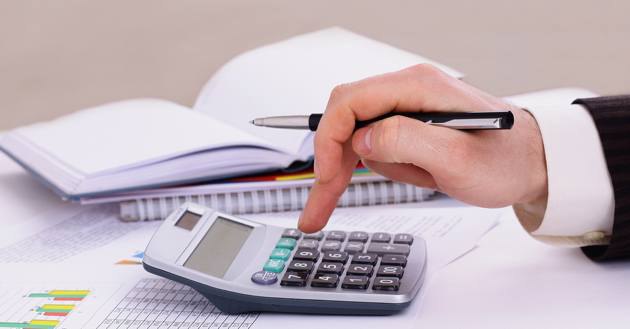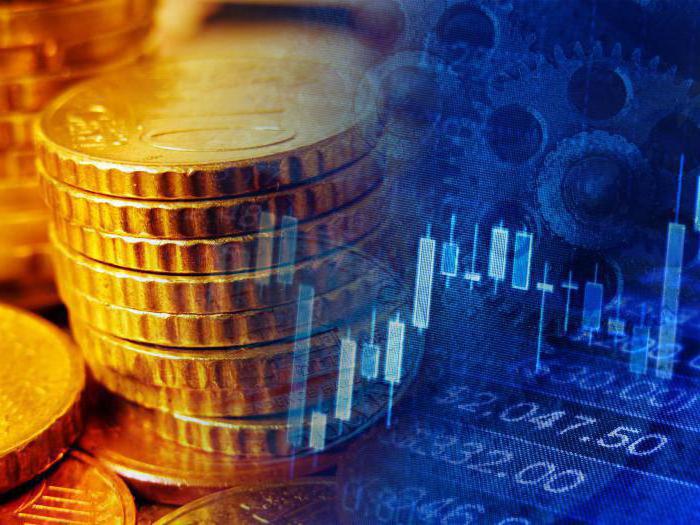The balance sheet of the company is a very important document on the organization of the reporting. This article will examine what it is, and guided by what rules it should be made up.
What is a balance sheet?
This concept is a tabular version that reflects all the financial indicators of a particular company or organization at the right date. Consider the most widely used balance sheet, widely used in the Russian Federation.

As a rule, such a balance has two components that are equivalent to each other in total. The first of them reflects what the organization has at the moment. In other words, these are company assets. And the second one shows for what money the property of this company was purchased. This is called a liability liability. So, the balance sheet of the company is equality, which reflects the acquired property, as well as the ability to keep accounting records.
This balance allows you to evaluate the current state of the company, as well as its condition at any other date. Using the correct data comparison, one can calculate and analyze the material condition, as well as the growth and decline trends in material profit.
The company's balance sheet is the most important and basic document that serves as an indispensable source of data that helps to conduct an economic analysis of any enterprise.
Classification of balances
In fact, there are really many varieties of the balance sheet, since their diversity can be determined for many reasons. For example, using the nature of the data, compilation time, way of reflecting data and purpose.
Consider the types of balance sheet by the way of reflection:
- dynamic - compiled using revolutions for a certain period of time;
- static - compiled for a specific date.

Given the moment of compilation, there are such types of balances:
- introductory - here is the reporting of the start of activities;
- current - the balance is drawn up for the reporting date;
- sanitized - is done during the recovery of the company, which is gradually approaching bankruptcy;
- liquidation - is made at the closure of the organization;
- unifying - is done when several companies are combined into one;
- separation - used, on the contrary, when the company is disconnected.
Types of balances by data volume
These are several types:
- single - compiled according to the data of one organization;
- consolidated - the obtained results of several companies are summarized;
- consolidated - the data of several interconnected companies are taken into account.
According to the purpose, the balance sheet can be forecasted, reporting, preliminary and final.
Balance sheet structure
The balance sheet of a construction company and any other enterprise in the Russian Federation is a reporting table, which is divided into two parts. One of them is called an asset, and the second is a liability. In this case, the final amounts of both assets and liabilities should be equivalent to each other.

Let us consider in more detail what constitutes an asset and a liability.
An asset can be called a reflection of those obligations and property that are under the direct control of any enterprise, for example, a construction company.At the same time, financial and economic activities are used, which may bring benefits in the future. Assets can be divided into two subspecies:
- Negotiable. Data on their availability is in constant dynamics, therefore, accounting for their value is determined only once.
- Non-current. This section shows all the property that is used by the company for a given period of time. The value of such assets is usually calculated in parts.
The balance sheet of a construction company, as well as any other organization, consists of a liability. This term is characterized as the main source of funds by which the asset itself was formed. It is customary to divide a liability into these three sections:
- Short-term liabilities. They are able to show the rapidly changing share of debt of any company.

- Reserves and, in fact, capital itself, reflecting the organization’s own funds.
- Long-term liabilities that can show the debt of the enterprise, the existing long time period.
The relationship of assets and liabilities
All assets and liabilities are closely related. If the first will change, then the second should change by the same amount. That is, if the number of assets increases, then the number of liabilities increases. And this suggests that if the number of assets decreases, the number of liabilities will decrease accordingly.
Definition of assets and liabilities in a simple and understandable language
If you are a beginner in the economic field, then, probably, not all the terms you understand with ease. Therefore, we will try to make out what liabilities and assets are in a common language.
So, assets can be understood as everything that does the work for you, while allowing you to receive a passive type of income without making any effort. But the liability is all that you have to make certain expenses. For example, if you were able to invest your funds in some progressive project, you will receive an asset - cash or stocks that are growing rapidly in value. But liabilities, on the contrary, force you to pay, for example, for a car bought on credit. However, when conducting a real business, everything is not so simple. There are a large number of nuances that you need to pay attention to.
Existing sections of the balance sheet
The balance sheet of the transport company, as well as other organizations, consists of several sections, built depending on time factors.
There are two sections of assets in the activities of the right organization:
- non-current assets are usually used for more than twelve months;
- negotiable will contain data on all indicators, which over the next next twelve months will be significantly changed.

The balance sheet of the transport company also has several sections in liabilities. Here, in addition to the time factor, it is very important to take into account also the ownership of the means by which the balance sheet asset begins to form.
Let us consider in more detail the three sections of liabilities
Reserves and capital, where all the company's funds are divided into constant and variable parts. The second of them depends on the accounting policies of the organization, as well as on the ever-changing result of the company.
Short-term liabilities. This includes accounts payable, as well as significant changes that will occur in the next twelve months.
Long term circumstances. This includes accounts payable, and significant changes that will occur at a jump much longer than twelve months.
The meaning and concept of balance sheet items
Before compiling an analysis of any economic enterprise, including the balance sheet of a transport company (an example of such an analysis is given in the table), you need to understand the sections of the balance itself. And this is done by breaking it into special articles. This is done in order to make it possible to highlight the main types of obligations and property, which will form the correct sections of the balance sheet. And this, in turn, helps simplify the reporting process.
Pagination
According to the laws of the Russian Federation, the form of the balance sheet should be divided into a number of such articles.
Intangible or non-current assets. This includes the following sections:
- all results of ongoing research and development;
- intangible search assets;
- search assets with a material component;
- fixed assets of the company;
- all types of financial investments;
- investment of income in some material values;
- deferred tax assets;
- other non-current assets.
Working stocks imply such a separation:
- value added tax on all types of acquired material assets;
- accounts receivable type of debt;
- financial investments, but cash equivalents are the exception;
- various current assets.

Reserves and capital are divided into such sub-articles:
- repurchased from auctioneers and own shares;
- retained earnings;
- revaluation of all non-current assets;
- additional paid-in capital without revaluation;
- Reserve capital.
Borrowed funds and current liabilities:
- loan debt;
- profit for future periods;
- estimated and other types of obligations;
Long term duties:
- deferred tax liabilities;
- estimated and other liabilities.

When drafting such a document as “The balance sheet of the insurance company“ Rosgosstrakh ”, it is necessary to use the details recommended by the RF Ministry of Finance on the items listed above. At the same time, each company has the right to use its own invented development, if it believes that this can lead to more accurate and detailed reporting. Moreover, if the company does not have certain numerical data regarding certain items, then they can be deleted from the list of the balance sheet.
Company balance sheet analysis: an example
This article provides a table of the balance sheet of the enterprise, on the basis of which this item will be considered.
The first time you read this report, you can do a fact-finding analysis. According to the balance figures, the entire complex component of property and liabilities, as well as the availability of attracted capital, and other information are usually assessed.
| Name of indicator | Code | On December 31, 2015 | On 12/31/2016 | On December 31, 2017 |
| Assets | ||||
| Fixed assets | 1150 | 200 | 250 | 320 |
| Stocks | 1210 | 115 | 160 | 205 |
| Receivables | 1230 | 160 | 190 | 170 |
| Financial investments | 1240 | - | 50 | 50 |
| Cash | 1250 | 25 | 210 | 120 |
| Balance | 1600 | 500 | 860 | 865 |
| Passive | ||||
| Authorized capital | 1310 | 10 | 10 | 10 |
| retained earnings | 1370 | 85 | 210 | 385 |
| Accounts payable | 1520 | 405 | 607 | 425 |
| Balance | 1600 | 500 | 860 | 865 |
According to the described example, we can conclude that this organization is just starting to develop. Please note that the balance sheet currency is growing every year, financial investments appear in the structure of assets. The cost of the operating system also increases and the level of debt decreases significantly. Moreover, all the above actions are carried out without long-term loans.
Balance Sheet: Form 1
This form is most often used to analyze the balance of banks. Although the banking system is a commercial organization that was created for profit, it still has its own characteristics. All banks must comply with the standards developed by law, as well as keep payments of accounts and use a different methodology of accounting processes.
However, the main approaches to analyzing the balance of the banking system are still very similar to other commercial companies.
Bank analysis will include the following steps:
- preliminary stage, including the reading of the balance, as well as the structuring of its parts;
- the analytical stage involves a description of all the structures of the company, the dynamics of growth and decline, as well as the interaction of balance indicators;
- The final step involves evaluating all the results of the analysis.
Also, when considering the company's balance sheet (Form 1), special coefficients must be calculated. Let's consider which ones:
- Capital adequacy ratio. In other words, it is the coefficient of reliability of a bank or other commercial organization.
- Ratio of borrowed funds. This may include, for example, interbank loans.
- Return on assets. This coefficient is able to show whether assets are being used effectively, as well as the quality of their profitability.
A few words about the balance of housing and communal services
The balance sheet of the housing and utilities management company is a prerequisite for the correct existence of such an organization. The management company provides management services for apartment buildings. The balance sheet of the management company is often compiled in a simplified form.
So, the composition of the accounting activities of such a company should include several mandatory documents:
- balance sheet;
- a detailed statement of cash flows, as well as a report on financial results;
- clarification to the balance sheet;
- report on all changes related to equity.
What are other non-current assets
The balance sheet of OJSC companies also includes other non-current assets. These include the following examples:
- The organization’s costs for facilities that will be taken into account as facilities such as operating systems or intangible assets. It also includes costs that are associated with incomplete research and development work if the company does not reflect these indicators.
- Equipment that requires special installation, installation, as well as all associated transportation costs.
- All amounts of the advances listed, as well as advance payment of all types of work and services related to the construction of certain facilities.
Rules for filling in the balance sheet
Before you start filling out the balance sheet of the LLC, the company needs to post all business transactions for a specific time period, and then create a balance sheet. Making up the balance, it is necessary to observe some rules, namely:
- all balance sheet data at the beginning of the reporting year must exactly match all the data from the end of last year;
- a credit cannot be allowed between the articles of liabilities and assets, except in certain cases provided for by the relevant provisions on accounting;
- all data of used articles must coincide with the data of the calculations;
- Amounts must be indicated in thousands of rubles, without the use of decimal places.
Profit and Income
The balance sheet of an insurance company and any other commercial organization is difficult to imagine without such concepts as income and profit.
Income is the amount by which the organization’s capital grows. The only way to achieve this is to constantly make contributions from the owners of the enterprise, as well as its continuous activities. Indeed, the purpose of the formation of any commercial organization is to generate income. Typically, the balance sheet of a gas transportation company displays all financial positions at a specific date. The following formula is used:
- Property or assets = liabilities or liabilities.
Equity shows the placement by owners of funds in a commercial enterprise.This also includes retained earnings.
When conducting financial transactions, the total volume of the balance sheet may decrease, increase, and also remain unchanged. Do not forget that after any financial transaction, the balance should always be in balance. That is, assets will always be equal to liabilities.
findings
To summarize the final results in this article. Only the balance sheet (an example for the company you can consider above) will be able to fully characterize the life of a commercial enterprise. It must be able to not only compile correctly, but also to study and analyze correctly.
The preparation of the balance sheet is a kind of report of the enterprise on its commercial activities. Only specially trained people can create such documents. In conclusion, I would like to remind once again what the assets and liabilities described above are.
Assets are:
- all movable and immovable property of the enterprise;
- its production and fixed assets;
- all inventory items of a given commercial organization;
- cash owned by the company;
- accounts receivable;
- as well as securities.
Liabilities include:
- retained earnings;
- registered capital;
- reserves;
- accounts payable;
- taxes
- loans and credits from other individuals and enterprises.
Also, in conclusion, I would like to give advice to future entrepreneurs. If you want to start your own business, start learning the theory of how to keep it. Of course, having a brilliant idea is very good. But without the economic foundations, building a good business is simply impossible. Good luck in your endeavors.